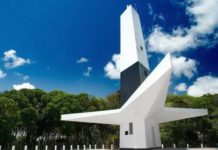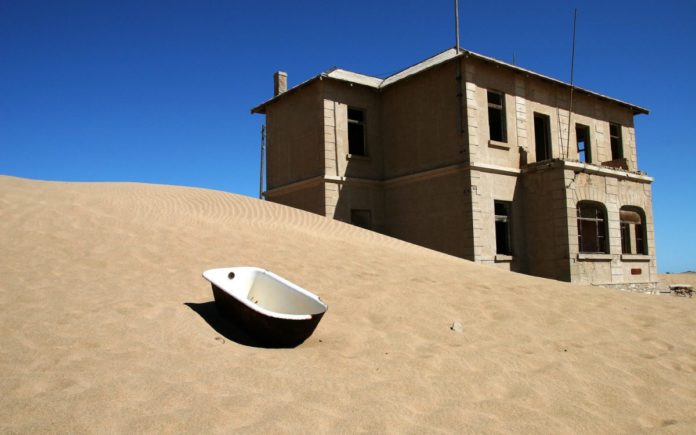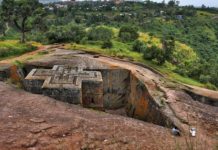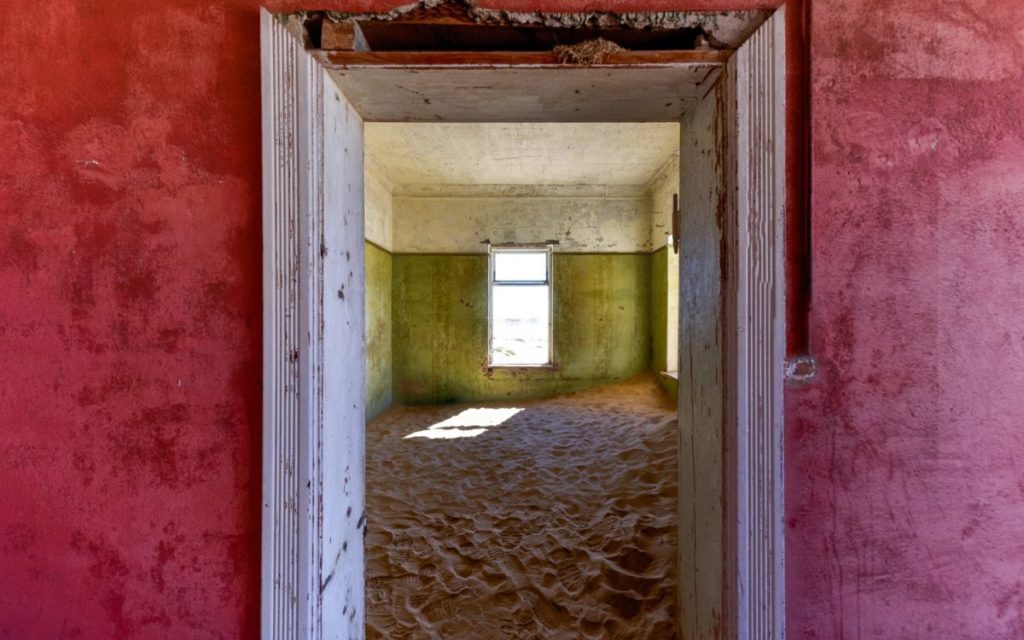
In a short time, this mining village became the richest town in Africa and had all modern comforts: a school, hospital, casino, dance hall, etc. Real German-style mansions were built for the over 700 families that lived there. Money was no obstacle. Until the First World War, Kolmanskop was where the South-Western Diamond Industry was based. The workers received high salaries and enjoyed social benefits. Every morning blocks of ice were delivered to keep the food and drinks cool, and the buildings were protected so that the strong winds wouldn’t ‘flood’ the area with sand. It all ended in the mid-1950s, when the massive extraction finished off the supply of diamonds and all the inhabitants abandoned the town. The miners moved to Oranjemund, around 400 kilometres to the south, where they began new excavations. Since then, Kolmanskop has become a ghost town buried by sand. The desert has reclaimed the space that the large stone mansions used to occupy, and nowadays the dance halls are small indoor dunes. Today, Kolmanskop is owned by the company Namdeb and receives thousands of visits thanks to the fame that its houses buried in sand have acquired. To enter, you must have a permit from the government of Namibia, in an attempt to avoid saturation and vandalism. Visits must be made in the company of a guide and have a maximum duration of one hour. Some tours include other abandoned towns such as Pomona and Bogenfels. 30 kilometres away we find another ghost town, Elizabeth Bay, which enjoyed its boom years between 1926 and 1935. Its good times didn’t last as long as those of Kolmanskop, but both met the same end: once the diamonds ran out, the town was finished.
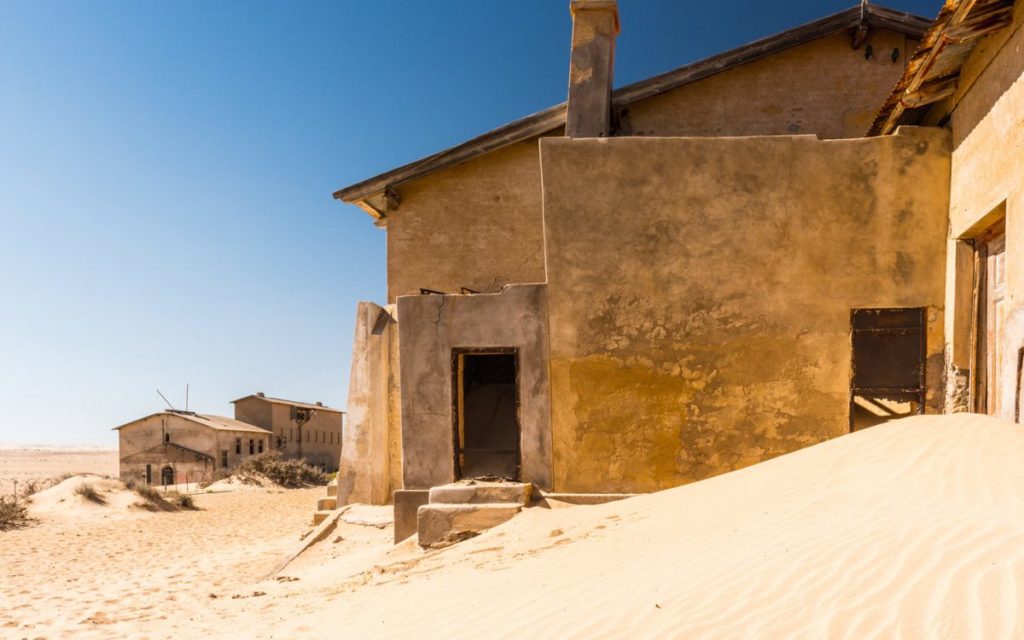
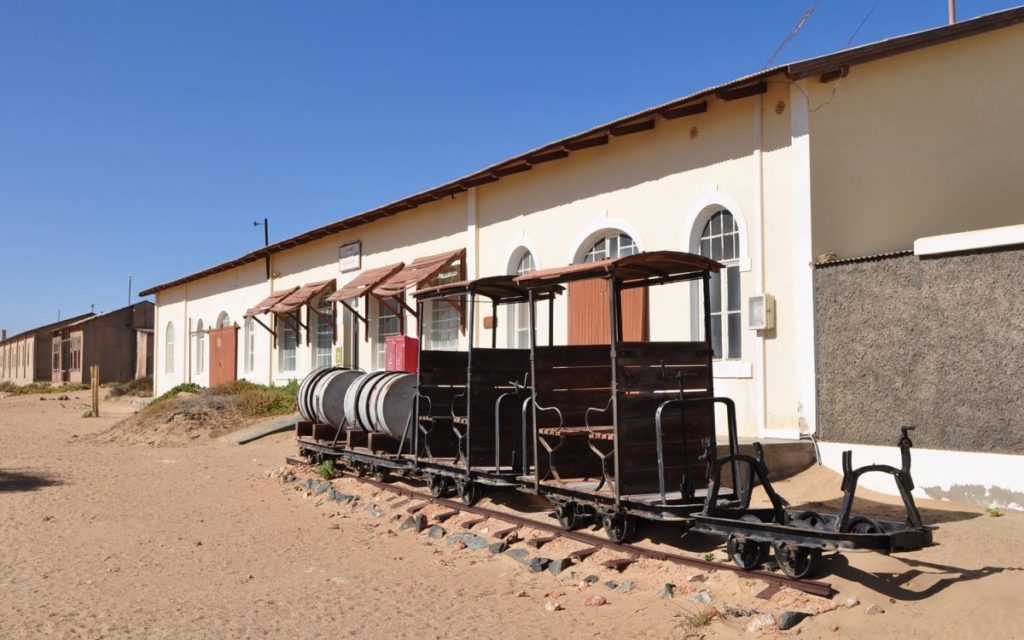
Good to know:
Recovering the lost sparkle
Kolmanskop is part of Sperrgebiet National Park, which in German means ‘prohibited area’. It’s a region of restricted access in the middle of the Namib desert. The Namdeb Diamond Corporation is currently working to repair the damage caused by the mining in the boom years.

